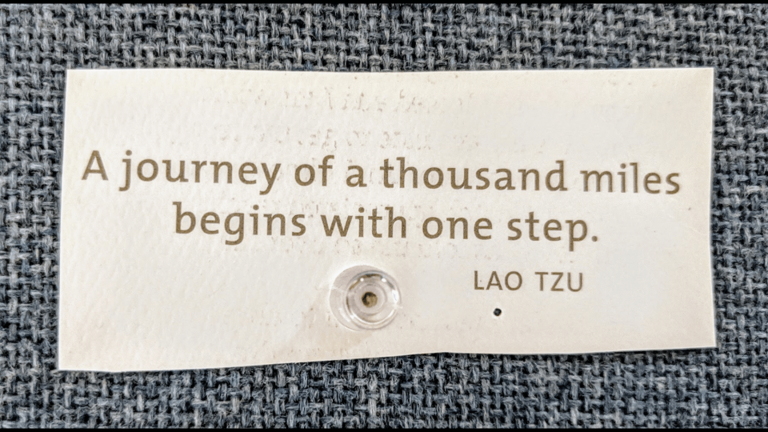Our category 20 Minutes to Class Time shares ideas you can put together with little prep for effective in-person teaching. Today’s post focuses on a fast method for breaking down and modeling reading, learning, or writing strategies for in-class practice. I often hit the same point every semester: realizing my students know how to doContinue reading “Break It Down: A Quick Prep Method for In-Class Workshops”
Category Archives: 20 Minutes to Class Time
Expanding Think, Pair, Share: Sparking Ideas for Class Discussion
I recently chatted with colleagues about how difficult it is to facilitate class discussion evenly across a group. We might ask the class a question and find some hands shoot in the air, or some students shout out ideas immediately. Others need time to think, while still others may be more introverted and reluctant toContinue reading “Expanding Think, Pair, Share: Sparking Ideas for Class Discussion”
My, What a Magnetic Persona You Have!
A few weeks ago, you heard how my students in a rhetoric course on public intellectualism and inclusion used the emotion wheel to analyze how emotional appeals factor into an author’s construction of self. In this same course, we’re also analyzing the personae our authors construct: we’re playing with Erving Goffman’s notions of performances ofContinue reading “My, What a Magnetic Persona You Have!”
Using the Emotion Wheel as an Entry Point to Text Analysis
In keeping with the spirit of our 20 Minutes to Class Time category, today’s teaching strategy is one that requires little prep, a teaching tool you can adapt for multiple purposes in a writing or other text-focused classroom. Course Context I’m teaching an advanced rhetoric course this semester on public intellectualism that centers questions ofContinue reading “Using the Emotion Wheel as an Entry Point to Text Analysis”
Collaborative Study Guides
When it comes to creating review materials, it’s easy to think faculty members should be the ones to generate the content. After all, we know which skills, terms, or concepts we want students to take from our classes. But, in line with constructivist pedagogical theory, I found that it’s useful – and indeed meaningful –Continue reading “Collaborative Study Guides”
Language Games: Playing with Formality in Writing
My first-year college students tend to have limited experience playing with language at the sentence level. Instead, their sentence-level experiences are often constrained to figuring out the “correct” way to use Standard Written English. To encourage appreciation for sentence-level play, we toy with formality in the following activity. First, find an example sentence that relatesContinue reading “Language Games: Playing with Formality in Writing”
Playing Detective: Observing and Analyzing Emotional Appeals
As we’ve shared before, experiential learning benefits students greatly, whether it’s through a field trip related to a course’s learning outcomes or writing chalk letters on the sidewalk. Further, simply leaving the classroom helps students make connections between their learning and the outside world. I often ask students to venture out into the building orContinue reading “Playing Detective: Observing and Analyzing Emotional Appeals”
The Ungraded Inquiry
Some years ago when I was in an airport, I noticed a novel on the ticket agent’s counter. I asked how she was enjoying the book, and she said another passenger had left it behind. I replied I was curious about the novel as I’d seen it on booklists, and I wondered what she thoughtContinue reading “The Ungraded Inquiry”
Getting the Cites Right
When we teach academic writing, we insist that students rely upon trustworthy materials and appropriately attribute their sources in a bibliographic list. When it comes to compiling that final resource list, students have an array of digital tools to turn to, whether they are writing in MLA, APA or even CMS style. Software like EasybibContinue reading “Getting the Cites Right”
Beyond the Walls: Learning Opportunities Outside the Classroom
If you walk past my classroom on most days, you’ll see students interacting with me and each other. But sometimes, you’ll see me in the room alone. When students start to get tired of our usual routine—mini lecture, writing and reflection, discussion—I send them outside the classroom. What are you teaching today that students couldContinue reading “Beyond the Walls: Learning Opportunities Outside the Classroom”









